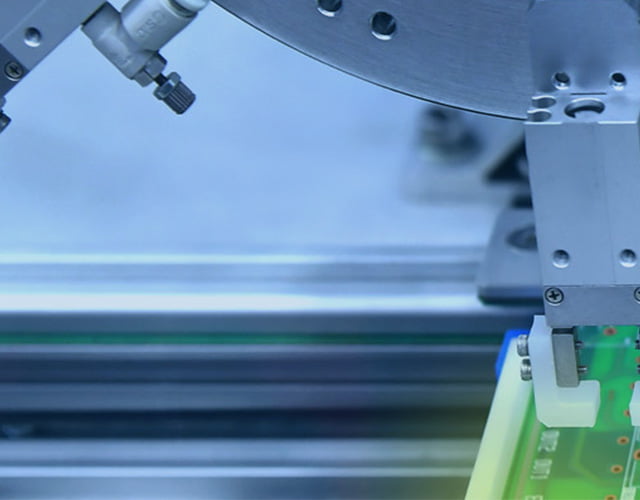In-Mold Electronics' Benefits and Main Applications
In-mold electronics (IME) is commonly proclaimed as an upcoming revolution in exactly how vehicle touch-sensitive user interfaces are made, which is expected to become a market larger than $750m by 2028. Yet what is In-mold electronics in fact, what are the benefits and also applications, as well as exactly how does it obtain processed?

What is In-Mold Electronics?
Before we review In-Mold Electronics (IME), the process that allows the production of E2IP's Smart Molded Parts, we will certainly identify two processes that have been around for a while. They are In-Mold Labeling (IML) as well as In-Mold Decorating (IMD). In-mold labeling is the procedure that develops colors, appearances, and graphics for the standard interfaces.
This concept was continued with In-Mold Decorating, an advancement that made it possible to use graphics on an entire surface of a unit, instead of merely a minimal location.
The In-Mold Electronics (IME) procedure from industrial design to end up item is implemented through the material and also production procedure innovations.
With IME, commercial developers currently have the style and liberty to create classy three-dimensional human-machine interfaces that were never before feasible. Making use of the layout in a two-dimensional layout engineer's layout and also publishing a circuit on a thin plastic movie substrate utilizing formable conductive as well as non-conductive inks.
The pick and place of elements is commonly the following action. Once the components and inks are straightened on the film, thermoforming can be done by high-pressure creating or vacuum cleaner development. After the circuits are checked the created movies are positioned in the mold and mildew where the material is then infused between the movies enclosing the components to make one solitary, lightweight, Smart Molded Part that can be affixed by screws, managers, or clips.
What Are The Advantages of In-Mold Electronics?
Much lighter product: professional sources show an in-mold electronics item can be approximately 70% lighter than a standard build.
Extra long-lasting: the electronics encapsulated in plastic wetness as well as extreme environments do not influence the completed product.
Much less price: a couple of components and a couple of actions minimize the best manufacturing cost. What you get from True North is a plug-and-play in-mold electronics device with capacitive secrets, LEDs, and resistors, already in position. The controller PCB becomes very tiny and also easy to.
A lot more flexibility of style: with in-mold electronics your capacitive secrets can take any type of form or dimension, they can be on the side wall surfaces of features, shaped like domes, be backlit, and be incorporated right into the graphics.
A lot more functional: by bringing the capacitive pads close to the surface area without any air gaps, in-mold electronics can provide you with a stronger clear signal than ever.
In-Mold Electronics' Main Applications
User control units
Push-button controls
Galley insert control panels
Cabin management system interfaces
Client monitor systems
Residence appliances
Home safety and security systems

Printed Electronics Revolution
Already a preferred selection in costs automobile insides, as well as aircraft cabins, Smart Molded Parts with IME, are additionally making it possible for the future generation of white goods, consumer products, as well as medical technology. IME is a genuinely transformative technology that will span throughout markets by seamlessly incorporating electronics right into smooth as well as elegant surfaces.
IME strips away the mechanical buttons located in typical electronics, giving designers unprecedented liberty to produce elegant customer experiences with minimalistic interfaces.
IME makes it possible to produce interfaces as well as gadgets that not only look appealing but are additionally lightweight, sturdy as well as highly useful. Thanks to fewer moving elements, this technology can additionally lower production, setting up, as well as upkeep prices while lowering the possibilities of breakdowns or failings.
In-mold electronics are suited to wide-ranging applications in aerospace layout, clinical technology, consumer goods, as well as a lot more. IME represents the future of human-machine user interfaces (HMI).

HMI Manufacturing Methods

HMI parts that supply backlit capacitive touch noticing are significantly made use of in multiple applications, consisting of auto insides as well as family home appliances control panels.
Relative to conventional mechanical buttons, the fewer parts made use of in backlit capacitive touch sensing units make them both lighter as well as simpler to set up, while the absence of discrete switches means that they can be wiped tidy.
One typical approach, deployed in some recently introduced cars and trucks, is to very first generate an attractive, commonly rounded component by means of high-stress thermoforming as well as subsequent injection molding. A functional movie consisting of a printed conductive pattern of capacitive switches and also interconnects is after that connected to the backside.
On the other hand, the production process for IME positions a lot more challenging requirements on the materials. First of all, conductive ink is published onto plastic, frequently polycarbonate, substratum. Electrically conductive adhesives (ECAs) are then used to attach electrical elements such as LEDs.
The substratum with conductive traces as well as mounted parts is after that thermoformed to generate the wanted curvature, adhered to by injection molding to produce the full component.
In-Mold Electronics' Prospects
As a result of the much less rigorous product demands as well as lower adoption barriers relative to IME, using functional foils to somewhat curved parts to make capacitive touch buttons has actually currently gotten to commercialization in the auto sector. Given that the two production techniques result in parts with extremely comparable capabilities and thus consumer experience, just how can IME contend?
The response hinges on thinking about the parts and assembly processes that IME makes unnecessary. For instance, supplying capacitive touch sensing by using practical aluminum foils suggests that lighting and also therefore waveguides require to be generated and also set up individually, whereas with IME they are indispensable to the element. This better integration implies that IME will allow decreased fewer parts/materials as well as less procedures generally in electronics assembly. IME parts will certainly thus be lighter, profiting both electric automobile array and also sustainability.
Eliminating the demand for lots of separate components as well as therefore improving IMEs worth recommending to loved ones to contending for manufacturing approaches. With practical aluminum foils, such comprehensive integration of electronic devices is difficult and slow-moving considering that parts would certainly need to be placed on a 3D surface-- in comparison, with IME digital elements can be mounted before thermoforming via fairly quick traditional 2D pick-and-place.
In recap, business adoption of IME currently hangs back several of the different methods to produce capacitive touch-sensitive surfaces. Nonetheless, IME supplies a lot greater potential for integration of added electronic functionality, making it possible for smaller-sized, lighter, easier-to-produce parts, to bring about a lower all-in price (see visuals). Because of this, IDTechEx believes that its relative benefit of methods such as applying practical aluminum foils will certainly raise over time, resulting in prevalent adoption.






